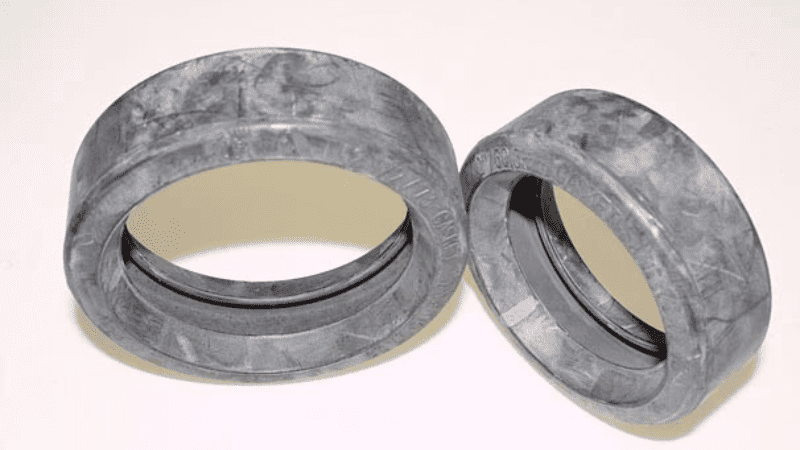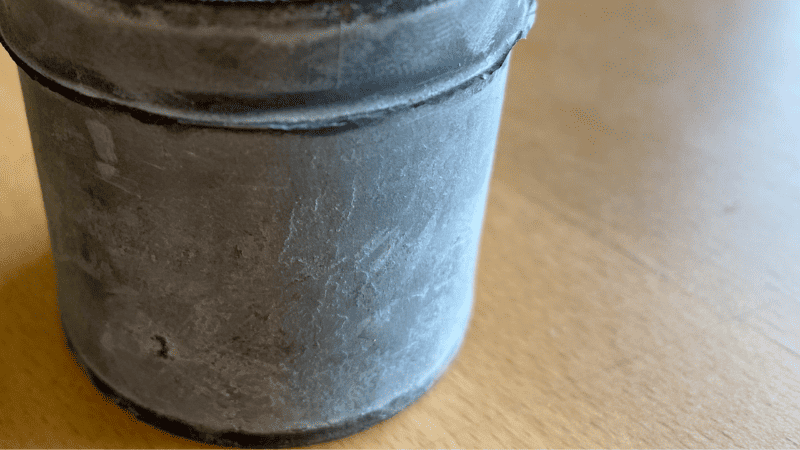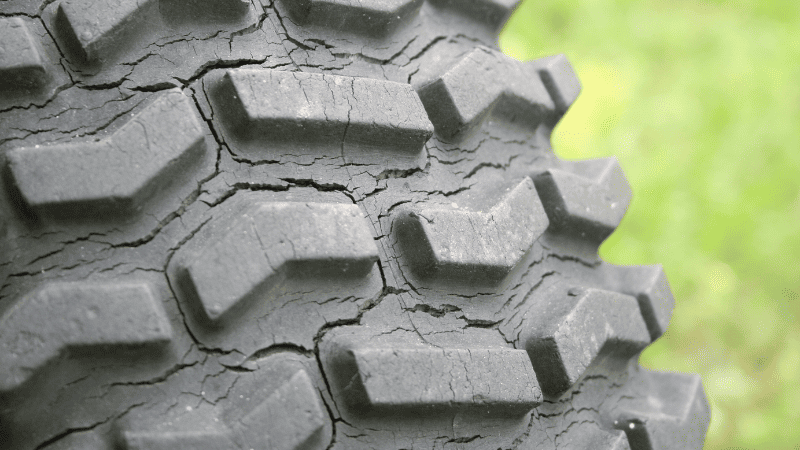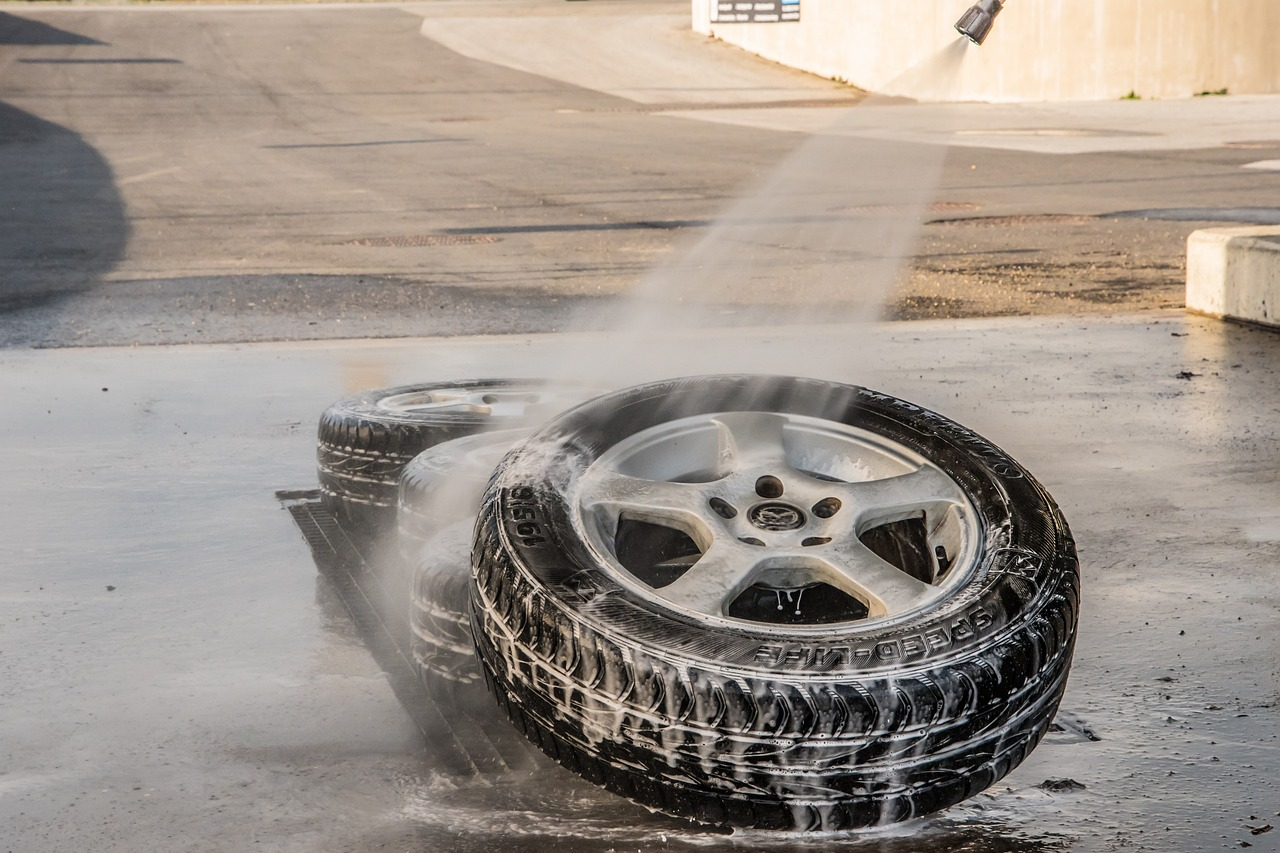In this article, we’ll tell you what rubber bloom is, what causes it, and whether or not you should be concerned by its presence in your products. We’ll also take you through a few ways of preventing the appearance of rubber bloom and how to get rid of it if it’s already showing up on your rubber products.
What is Rubber Blooming?

Rubber blooming refers to the appearance of a powder or an oily film on the surface of a rubber product. This substance is called bloom and it comes from the migration of certain compounds from the inside of the tire material to its surface.
Blooming can affect both unvulcanized and vulcanized material. It can be seen in different types of rubber compounds including:
- Natural rubber
- Nitrile rubber, also known as, nitrile butadiene rubber (NBR)
- Neoprene rubbers
- EPDM rubber
Causes of Rubber Blooming
When rubber products are manufactured, vulcanization accelerators and other chemicals are added to them to improve certain qualities while hindering others. It is these compounding agents that migrate to the surface in the form of a powdery or oily bloom.
These substances can come to the rubber surface before or after vulcanization if they have reached their saturation limit within the material. Some substances are expected to move to the surface to shield the rubber from factors that cause degradation.
Excess Sulfur or Peroxide

Vulcanization of rubber is mostly commonly done using sulfur, but organic peroxides are also used to achieve a similar result. When the amount of vulcanizing agent added to the rubber exceeds a certain concentration, the unused vulcanizing agent can find its way to the surface of the material.
When these vulcanizing agents bloom, they tend to show up as a white or grey powder.
Antiozonants and Antioxidants
Antiozonants and antioxidants are two other groups of compounds that can cause rubber blooming. Both types of compounds are added to elastomers such as natural and synthetic rubbers to limit the rate at which they are damaged by ozone, oxygen, UV, and exposure to other environmental factors.
Antiozonants can either form a physical barrier that keeps the ozone from attacking the rubber, or chemically react with the ozone before it reacts with the rubber. Antioxidants can also be either physical or chemical, and also work by keeping out oxygen or reacting with it to delay its aging effect on rubber.

The issue of oxygen and ozone attacking the rubber is of particular concern on the material’s surface. Therefore, both antiozonants and antioxidants are supposed to come to the surface, i.e., bloom, so they can form a protective layer. This helps to increase the service life of the product.
Lubricants
Not all forms of blooming involve a powder. In some cases, the substance that appears on the surface of the rubber will be oily in nature. This kind of bloom comes from lubricants that are added to the rubber during processing. This phenomenon has been referred to by several names including:
- Wet bloom
- Oily bloom
- Bleeding
- Exudation
Lubricants are added to the compound to reduce internal friction within the rubber while it cures. Excess lubricant can be exuded on the surface of the rubber material forming an oily bloom. When the installation of a rubber part or its operation requires less friction, the presence of this oily film is beneficial.
Send Your Inquiry Now!
Quality Meets Affordability. Inquire Now for High-Quality Products at Low Volumes.
The Impact of Rubber Blooming
In many cases, blooming has little to no effect on the performance of rubber parts. However, its presence can affect how the product is perceived. In very specific cases, it can limit how rubber compounds can be used.
Aesthetic Implications
The most obvious impact of blooming is that the rubber product may not have aesthetics that customers find appealing. Many customers will expect that the rubber will be a specific color. When the product arrives with a white powdery film on it, they may find it less appealing.
For manufacturers, the aesthetic implications matter because good-quality products can be easily rejected due to purely cosmetic issues.
Functional Implications
One of the notable functional implications of blooming is that it can make rubber less adhesive. This is usually not a huge concern, but there are situations where adhesiveness in rubber is an important quality such as:
- When the rubber is expected to adhere to itself
- When rubber is expected to adhere to another material e.g. a fiber or a metal.
When rubber undergoes blooming before the vulcanizing process, it can affect its ability to be used in products that require several layers of rubber such as tires and transmission belts. The natural stickiness of unvulcanized rubber makes it easier to assemble the layers of different materials before they undergo curing.

When excessive blooming takes place before vulcanization, it can also result in poorly vulcanized rubber. Since this type of blooming takes place before processing, manufacturers can catch it long before a product is shipped to a customer.
For the most part, aesthetics will be the main thing that suffers as a result of rubber blooming. The bloom on the surface of many common rubber products like gaskets, door seals, and O-rings is not known to compromise the functioning of these parts or the integrity of the material.
Consumer Perception
Even though rubber blooming will have little to no negative effect on functionality, and even has some positive ones, blooming may reduce a product’s perceived value. Aesthetics play a big role in how end-users view things. If something doesn’t look right to a consumer, they may perceive it as being worth less.
Additionally, the aesthetics may also lead some customers to infer that the product will not function as well as expected. If the expectation is that a rubber product will look a certain way, anything that looks different may be believed to be defective in some way.
Send Your Inquiry Now!
Quality Meets Affordability. Inquire Now for High-Quality Products at Low Volumes.
Prevention and Remediation of Rubber Blooming
Although rubber bloom doesn’t have a negative effect on most rubber products’ performance, it’s still a good idea to minimize it where possible. There are several ways of achieving this.
1. Material Selection
The first way of limiting the amount of blooms that will take place over a product’s life is to start with raw materials that are less likely to bloom. This may mean any of the following:
- Choosing accelerator chemicals with higher solubility in rubber
- Using multiple accelerators in smaller amounts instead of one to counter the limited solubility of individual accelerators.
- Using lubricants and additives with a high degree of compatibility with the rubber.
2. Formulation Adjustments
Another way to avoid blooming is by adjusting the ratios of the accelerators and other additives that are used during vulcanization without changing them. Alternatively, you can switch out one accelerator for a similar one that is less likely to bloom.
3. Cleaning Off the Bloom
It’s not always possible to adjust the compounds used when processing rubber or to change the formulation. In such cases, blooming will be unavoidable, but occasional cleaning of your rubber product could be all you need to give it the right aesthetic appeal.

To clean off rubber bloom, you’ll need to find the right cleaning agent. Some blooms can be cleaned using a solution of light mineral oil and water, while others will require a solvent like alcohol. It may take a few tries to identify the right solvent. Although some solvents can damage rubber, using them to clean the surface of the material is unlikely to cause a problem.
Send Your Inquiry Now!
Quality Meets Affordability. Inquire Now for High-Quality Products at Low Volumes.
Conclusion
Rubber blooming occurs when compounds added during the manufacture of rubber products migrate to the surface of the material. This can be by design to help delay rubber aging, but it can also be because of excess amounts of certain compounds.
In most cases, blooming has no negative effects on the material but it can affect how the product is perceived. Luckily, it can be mitigated by cleaning or changing some compounding agents.
Discover the Perfect Solution for Your Business with Hongju
Too much bloom on your rubber products might be a problem, but how much bloom is too much bloom and what can you do about it? These are the types of questions an expert can help with. Whether you need to try a different rubber compound or you just need a good cleaning agent, the guys at Hongju can help you take on any rubber blooming challenge.